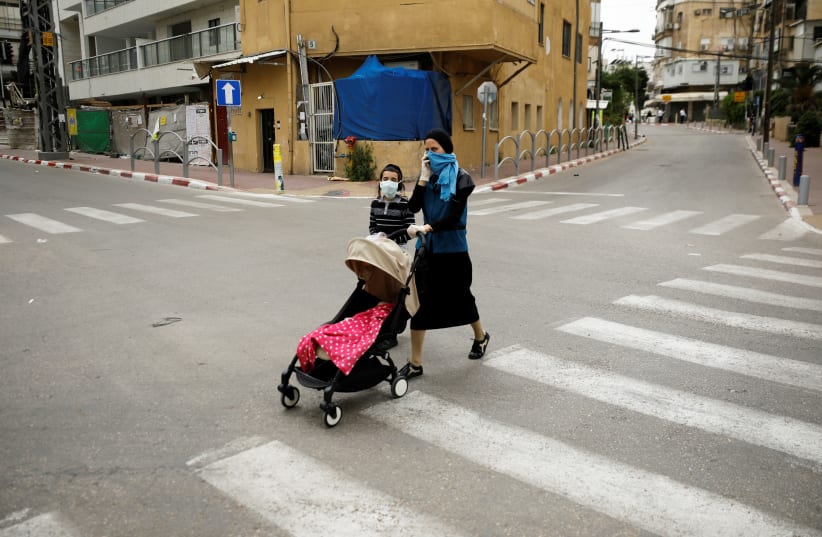Like in a war against an enemy military, the battle against the novel coronavirus, known as COVID-19, also requires an exit strategy – how does it end, what does that ending look like and what happens the day after?
Formulating a plan does not mean that we are at the point for it to be implemented, but it does give a sense of hope that there is a day after and that, if we continue to abide by the rules, regulations and restrictions, we will get there one day soon.
Sadly, this country’s leaders are setting a bad example. Prime Minister Benjamin Netanyahu and President Reuven Rivlin both hosted family members that do not live under the same roof as them for the Passover Seder. Health Minister Ya’acov Litzman is currently home sick with the coronavirus after he reportedly attended a public prayer service, even though such gatherings had been banned by his own ministry.
While these three leaders seemed to have no problem violating regulations, they also had no problem calling on the public to adhere to them. We all remember the nightly televised statements by Netanyahu during which he taught us how to sneeze and hold a tissue, as well as the televised address by Rivlin two weeks ago when he called on citizens to listen to the government.
One of the ways for example for Israel to get out of the quarantine would be a higher number of tests, which would enable the country to create “green” zones for the places where there are no sick and “red” zones for the areas that have a high rate of infections.
Unfortunately, that cannot currently be done since Israel cannot get its testing numbers above 7,000. On the other hand, countries like South Korea and Singapore, which adopted high-volume testing almost immediately, were able to isolate cases, quarantine suspected cases and suppress transmission of the virus.
For that to happen, though, Israel would need to get to a number of tests, such as 30-50 thousand a day, Defense Minister Naftali Bennett has been pushing for from the beginning of this crisis.
The opposition of the Health Ministry to this proven model has been a mystery for weeks. Health Ministry officials Moshe Bar Siman Tov and Prof. Sigal Sadetsky have pushed back on increasing the number of tests from the beginning, repeatedly saying that tests were not the way to get Israel out of the crisis. It made no matter that the model worked in Singapore and South Korea or that the head of the World Health Organization called for other countries to do the same.
Some reports have indicated that their resistance stemmed from a simple fact – Israel did not have the equipment and materials needed to conduct tests and sadly, still does not. As a result, the officials had no choice but to turn a sad reality into an ideology.
Then there is the issue with the flights that continued to land in Israel from New York, the epicenter of the coronavirus in recent weeks. Why was Israel allowing people to come into the country with no control over who they were, where they were going, if they were sick and who they had come in contact with? This failure led to the continued spread of the disease.
What happened until now is in the past and will hopefully one day be investigated by a state commission of inquiry. Now, the question is how Israel moves forward. Yes, the rate of infections seems to have slowed down and the number of dead remains at about 1%, but Israel is far from getting itself out of the coronavirus woods.
How do people go back to work? How do kids go back to school? How do we get leaders who lead by example and take what is happening as seriously as their citizens?
The people of Israel deserve answers to these questions and a path forward. For now, we have none of that.
